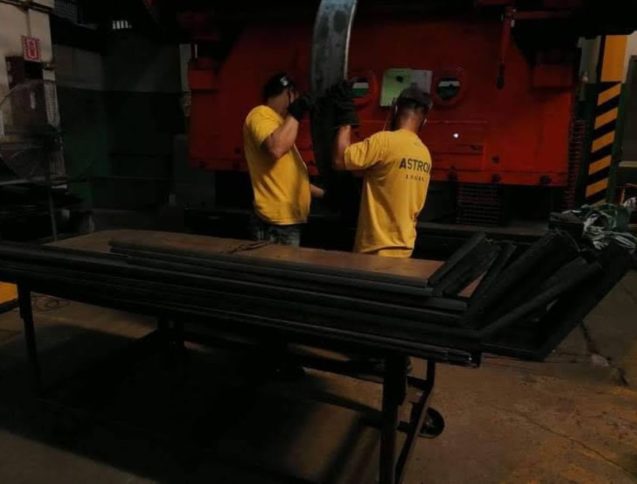

Have you ever wondered how most of the steel products we encounter in everyday life are manufactured? From large scale structural steel members, to everyday metal shelves used for equipment storage — all of these and everything in between can be attributed to steel fabrication. Astron Metal Work’s steel fabrication in the Philippines, in particular, focuses on providing the everyday Filipino with high-quality and industrial grade steel products and accessories. Some of these finished products are essential for both companies and end-consumers, such multipurpose pushcarts, storage shelves, stainless steel doors, grills, grease traps, filters, strainers, and the like.
Steel fabricated products in the country may appear simple to the common folk, but there’s actually complex processes and machinations involved in the manufacturing processes. Most of the implemented fabrication techniques are automated, which requires CNC cutting services in the Philippines and other types of machineries. These systems are essential in transforming casted steel products like ingots, slugs, and billets into finished metal items that are ready for end-use or for second-tier production. Continue reading to learn more.
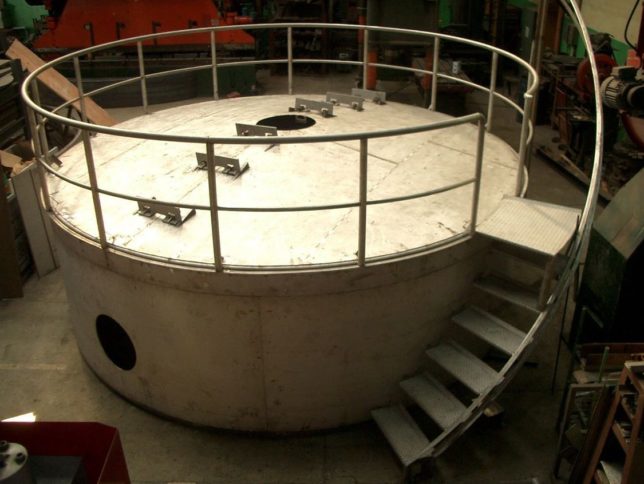
Simply put, steel fabrication is the process of modifying raw steel materials — booms, ingots, slugs, bars, rods, and billets — into finished products that are designed for use in construction or assembly purposes.
Steel fabrication can be traced back to the ore mining process wherein sites are geophysically examined for iron ores. Once the ores have been located, they undergo a complex refinery and smelting procedure that eliminates impurities. The resulting molten steel will then be casted into different raw products, depending on the use.
For example, steel seamless pipes are made by extruding billets into a smaller tooling die that pierces a hole through the billet and results in a hollow section for the pipes. Similarly, welded steel pipes are also fabricated in a process known as welding. In this method, a sheet metal is cold-rolled/cold-drawn. This is done in order to connect the ends together and create the hollow pipe formation through arc, metal inert gas, tungsten inert gas, or other kinds of welding techniques.
Extrusion, casting, and welding are just some of the many types of steel fabricating techniques. Later in this article, you’ll also encounter processes like cutting, bending, machining, shearing, punching, stamping, folding, and the like. With the use of automated machinery, steel fabricating is well capable of achieving both structural and non-structural-grade products with high tolerances.
Some of the most common steel fabrication methods are shearing, cutting, bending, stamping, punching, and folding. As mentioned before, casted steel materials are only semi-finished and would still need to undergo further machining. Steel fabrication makes this possible with the help of professional fabricators and modern machining tools, machines, and systems that can perform a number of complex operations.
Cutting is one of the earliest forms of fabrication that involves usage of CNC cutting machines, power tools, chisels, circular saws, and other devices. The purpose of cutting is to eliminate unwanted parts of a steel specimen or to further trim it down to meet design specifications.
While cutting can be done manually, most fabricating companies nowadays rely on computerized machinery and tool steel with a high carbon content. This eliminates defects such as burred edges, blunt surfaces, and deformed parts.
Bending is the process of applying a permanent and deliberate deformation on a steel frame, pipe, sheet, or rod. Precision bending is possible with the use of press brakes and hydraulic bending machines that apply consistent force on the steel workpiece. However, the quality of the finished product may depend on several factors, such as the steel grade, type of machine, size of specimen, and the like.
The main difference between shearing and cutting is the size. Cutting can be performed manually through a power saw that’s operated by the fabricator who can support both the tool and specimen on a workbench. On the other hand, shearing is best used in trimming larger unwanted parts from a steel sheet, using a bench shearing tool or a hydraulic shearing press.
Another form of steel fabrication known as stamping, combines different techniques together. A steel sheet metal is first loaded onto a press machine with a tooling die that can cut different shapes and patterns onto the sheet. Stamping requires instantaneous force in order to achieve precision cutting and consistent shapes — especially in metal plates or strips that have a small surface area.
Like cutting and shearing, punching is used to remove unwanted material from the steel sheet. The main difference is that punching aims to produce holes on the metal workpiece. For example, steel frames, beams, and purlins will usually be stamped to make way for fittings, bolts, and other attachments. Depending on the wall thickness of the sheet and its ductility, a high-turret punch press, CNC, or lathe machine can be used.
Steel fabrication in the Philippines relies on a combination of manual and automated techniques in order to craft structural, industrial, and everyday steel products. Methods like cutting, shearing, punching, stamping, and bending are done to permanently deform the steel even under room temperature. This results in a wide range of versatile and durable steel products, fit for second-tier or end-market distribution.
Astron Metal Work’s CNC cutting services in the Philippines, for example, can accommodate manufacturing of fabricated steel products such as ventilation hoods, filters, vents, air ducts, utility push carts, strainers, filters, grease traps, and more. If you’re in need of steel fabricating services, you can rest assured that our fabricating and assembly services are fit to your standards.
Click here to learn more about our services! You may also inquire with us for more information.
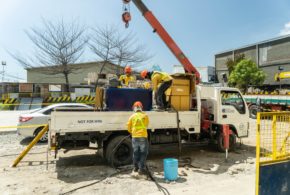
What are the benefits of quality control in metal fabrication? Enhances safety Cost savings Compliance with industry standards Boosts customer loyalty When sourcing for an industrial fabricator in the Philippines, it’s crucial to choose one that has an in-house quality control procedure. In the metal fabrication and manufacturing industry alike, quality control is defined as […]
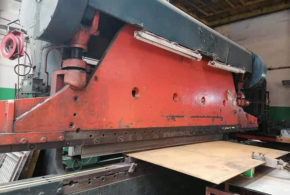
What are the techniques used in sheet metal fabrication? Shearing Cutting Bending Punching Assembling Sheet metal fabrication is defined as the manufacturing process of shaping sheet metal according to functional needs. Sheet metal is one of the most ideal materials for a wide array of industries because it is lightweight and immensely ductile. The techniques […]
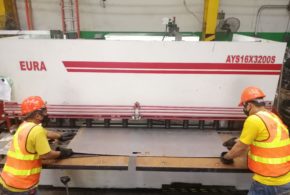
What are the uses of CNC cutting services in the Philippines? Construction materials Food production items Metal furniture Gas station fixtures CNC cutting refers to the metal fabrication procedure that involves using computer numerical control routers with the advantage of versatility and flexibility being derived from automation. The computerized routers are adept in cutting […]

What are the uses of sheet metal fabrication? Construction Petroleum Industrial Industries Sheet metal refers to metal formed into thin sheets, typically by hammering or rolling. It is highly durable and able to maintain its structural integrity, making it easy to work as it can be bent, stamped, cut, dished, and punched. Sheet metal fabrication […]